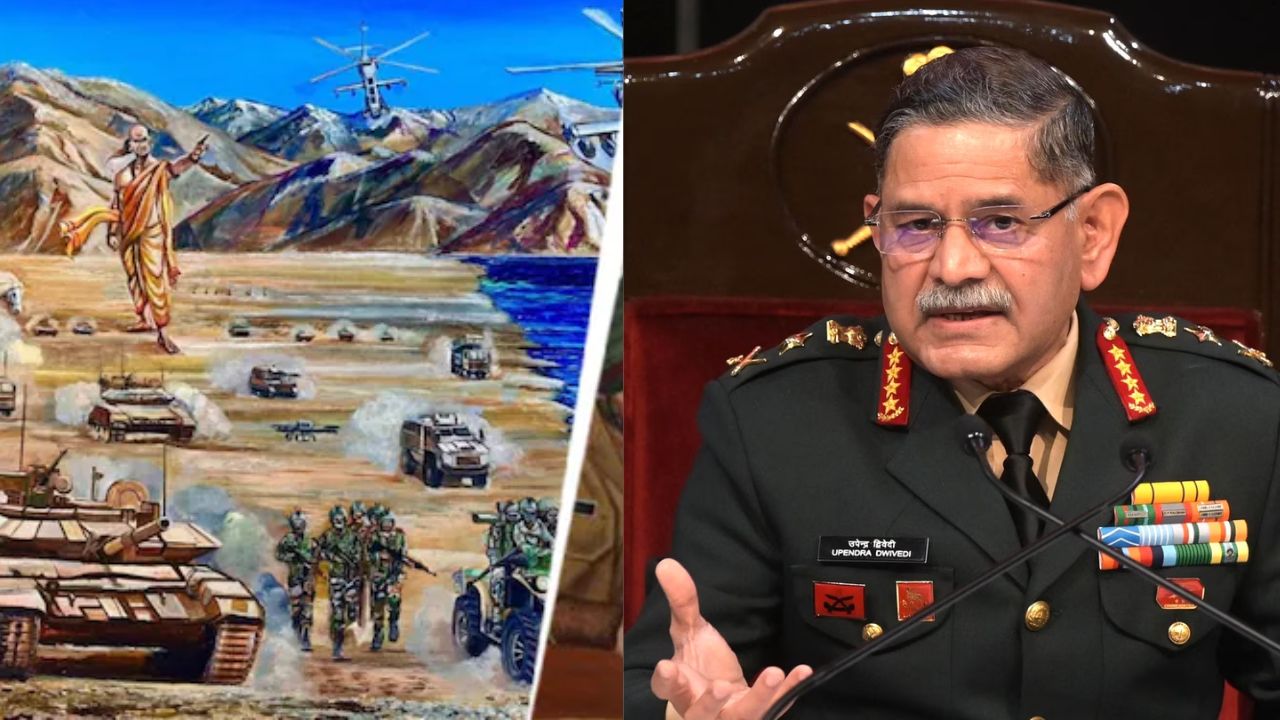Indian Army Chief Upendra Dwivedi Explains 1971 War Painting Replacement in His Lounge
Army chief General Upendra Dwivedi on Monday justified replacing an iconic painting of Pakistan's surrender in the 1971 war at his office in Raisina Hills with a new artwork titled "Karam Kshetra".

1971 War Painting: Army chief General Upendra Dwivedi on Monday justified replacing an iconic painting of Pakistan's surrender in the 1971 war at his office in Raisina Hills with a new artwork titled "Karam Kshetra".
The iconic picture of Pakistan’s surrender, once displayed in the lounge of the Army Chief’s office, was removed in December for maintenance and care.
However, instead of returning to its original location, the picture was sent to the Manekshaw Convention Centre.
It features the snow-capped mountains around the Pangong Tso lake in eastern Ladakh, Krishna's chariot and Chanakya, which represent strategic wisdom.
Also Read: PM Modi’s Mumbai Schedule: Naval Combatants, ISKCON Temple Inauguration, Mahayuti Meet
The Army chief suggested that the new painting was made considering the current realities, as he mentioned the re-balancing of troops in view of challenges coming from the northern front.
Defending the move, Army Chief General Upendra Dwivedi said, "If you see the golden history of India - it has three chapters. It has the British era, the Mughal era and the era before that. If we wish to connect that and the Army's vision, symbolism becomes important."
Suggesting a generational change, the army chief said the new painting is created by Lt Col Thomas Jacob of the 28 Madras regiment, "who belongs to the younger generation in the force".
Also Read: Delhi Dense Fog Disrupts Travel: 100+ Flights Delayed, 26 Trains Affected
The Indian Army has said that the new painting, "Karam Kshetra" means "Field of Deeds". "It portrays the Army as a guardian of Dharma that protects the nation's values and reflects its evolution into a technologically-advanced integrated force," it explained.
Addressing the criticism over the new painting, Army Chief Gen. Dwivedi said, "It is also being said that there is a semi-clad Brahmin standing at the centre on the banks of Pangong Tso. If Indians do not know Chanakya, they need to refer back to their civilisational approach."
The army chief further said that "If I have to connect the past, present and future, the new painting symbolises that."
Laying the case to rest, the army chief concluded that the move should not be seen as a removal of the iconic 1971 painting from his office. "The army chief has two lounges and the surrender painting is at the lounge at Manekshaw Centre," Gen. Dwivedi said.
Also Read: Union Home Ministry Approves ED Prosecution of Arvind Kejriwal
For breaking news and live news updates, like us on Facebook or follow us on Twitter and Instagram. Read more on Latest National News on The National Bulletin


